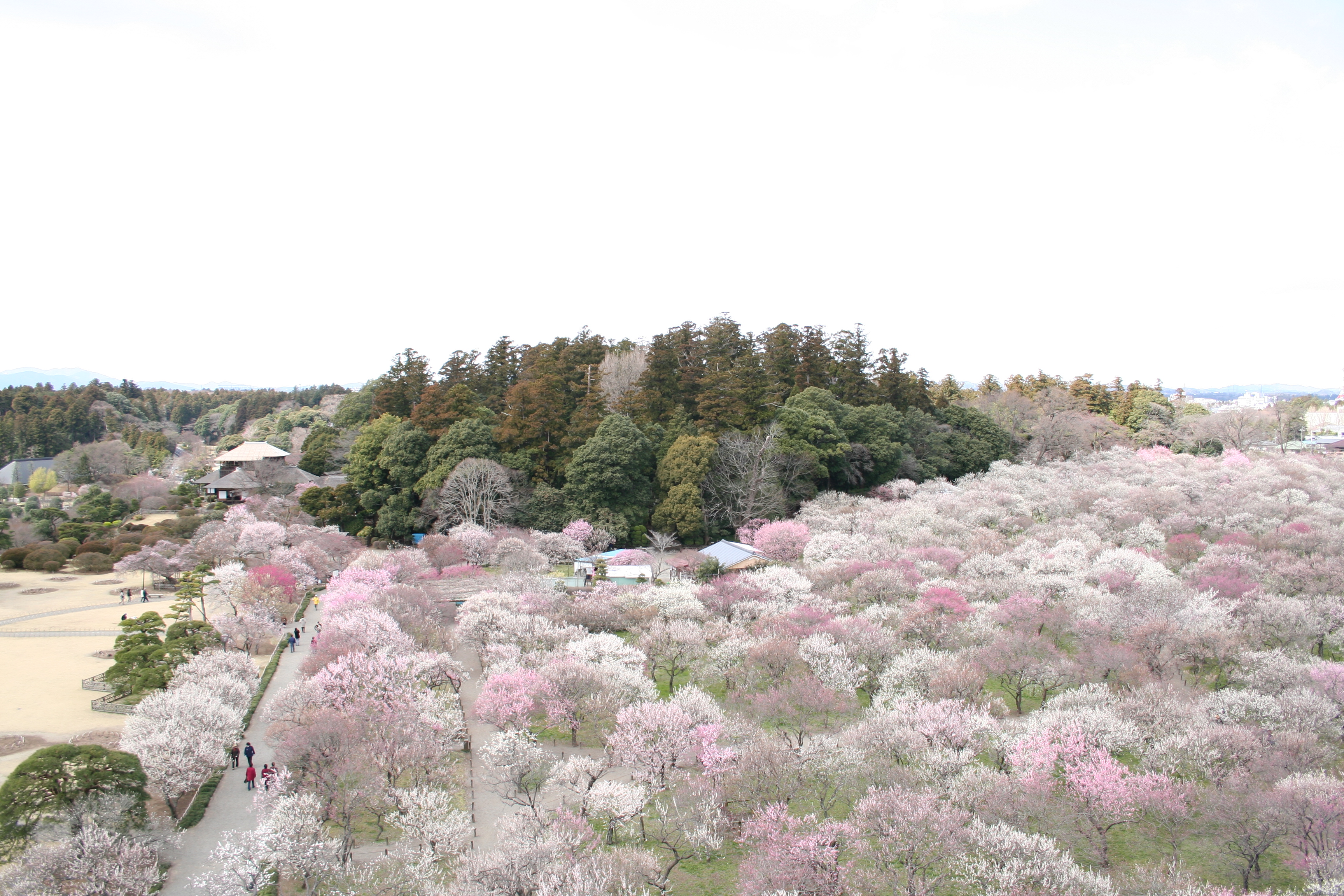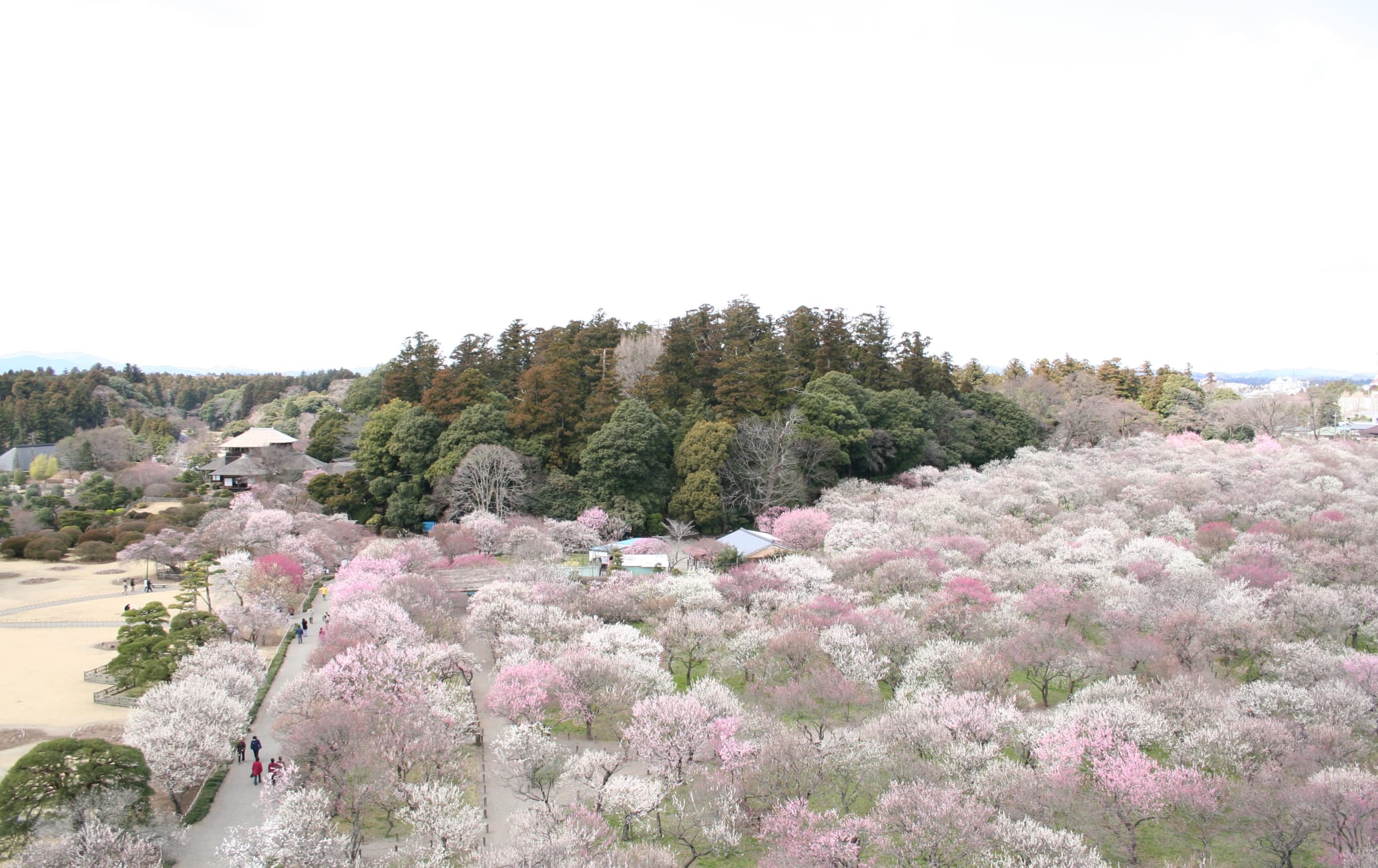A landscaped garden meant for everyone to enjoy
Kairakuen is one of the most popular attractions in Ibaraki Prefecture . It was created in 1842 by the ninth lord of the Mito domain, Tokugawa Nariaki. Like a modern public park, the garden was designed not only for the feudal lord and his warriors to enjoy, but also for the public.
It is one of the three most famous gardens in Japan, along with Kenrokuen in Kanazawa (Ishikawa Prefecture ) and Korakuen in Okayama Prefecture .
Don't Miss
- 3,000 plum trees of about 100 varieties in full bloom in early spring
- Cherry blossoms, azaleas, bush clover and other flowers throughout the four seasons
- The view from the Rakujuro on the third floor of the Koubuntei (main house) is exceptional
How to Get There
Kairakuen is located in Mito City, Ibaraki Prefecture and is about 1 hour and 10 minutes from Tokyo.
The journey from Tokyo Station to Mito Station takes about 70 minutes by limited express (Hitachi or Tokiwa) on the Joban Line, or about 2 hours by local train. From Mito Station it is about 20 minutes to Kairakuen by bus.

Made to inspire tranquility
Kairakuen was founded as a place of rest and relaxation for body and soul. "Kairakuen ki", which embodies the philosophy behind the establishment of Kairakuen, has a key phrase: "one tension, one relaxation". In the Confucian text "Reiji", Confucius said that it is not only important to work hard, but also to relax and enjoy yourself. In 1841 Tokugawa Nariaki opened the Kodokan military school and the following year he opened the Kairakuen garden. They were conceived as a pair of complementary educational facilities: the Kodokan as a place for training in the arts and sciences, and the Kairakuen as a place for rest and relaxation.

Thousands of plum trees color the world
While most Japanese gardens are famous for their cherry blossoms, Kairakuen is famous for its plum blossoms. Every year, some 3,000 plum blossoms bloom ahead of spring, transforming the garden into a paradise of red, pink and white. The Mito Plum Festival at Kairakuen is a huge event, attracting people from all over Japan.
In spring, Kairakuen is filled with cherry blossoms and azaleas, and in fall with bush clover and colorful autumn leaves.


Swan Lake
Kairakuen is home to Lake Senba, which is known as the "Oasis of Mito." The lake is known for its beautiful swans and other waterfowl, and you can take a tour of the lake in a swan-shaped boat to get a look at them up close. At night, the fountains are lit up, creating a beautiful view of the lake.
Sites to see around Kairakuen
Kairakuen's Kobuntei Pavilion was built by Nariaki as his personal villa and as a place where he could invite literary figures, artists, retainers and family to join him to celebrate life and poetry. The Rakujuro, located on the 3rd floor, offers a spectacular view in three directions.
The Kairakuen and the Kodokan facilities were the largest feudal schools in Japan and taught a wide variety of subjects including Confucian studies, astronomy and martial arts such as swordsmanship and horsemanship. The main gate and the main office, both of which date back to that time, have been designated as National Important Cultural Properties and have been preserved as they were in the past.
Events at Kairakuen
Kairakuen hosts a variety of events throughout the year. The Mito Plum Blossom Festival in early spring is the biggest event. In summer, the Mito Kairakuen Fireworks Festival takes place on Lake Senba, where you can enjoy the fireworks and their reflections on the lake. There are also events to celebrate the blooming of the cherry blossoms, azaleas and bush clover.

























































